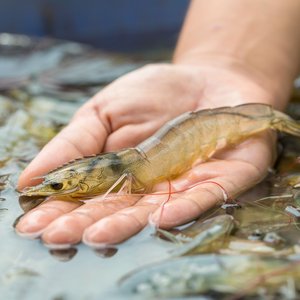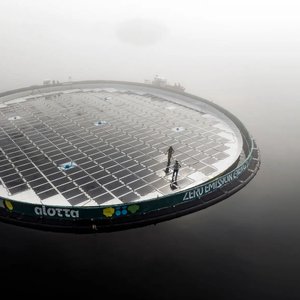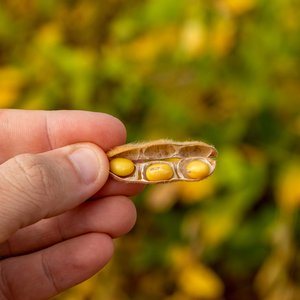SARDI scientist Dr David Stone in the SARDI Aquatic Sciences new abalone laboratory which is being used to fast track diet research for farmed abalone.
Australian abalone farmers look set to save up to AU$2.5 m every year by switching to a new feed strategy developed by scientists at the South Australian Research and Development Institute (SARDI). The breakthrough in better meeting the nutritional needs of abalone promises to lift productivity by 10% and will help producers meet rising demand for the premium seafood in high value markets including China, South East Asia and the US.
Agriculture Minister Gail Gago said innovations such as this would help existing producers and encourage others to become part of this lucrative area of aquaculture in Australia. National abalone exports currently weigh in about (700 tonnes a year, with a farmgate value of $24.5 million.
“The latest on-farm results for the SARDI high-protein feeding system confirm expectations of productivity increases up to 10%,” Ms Gago said.
SARDI has been working closely with both growers and feed manufacturers testing the new feed strategy in large scale commercial trials on three farms in South Australia and Victoria since August last year.
SARDI nutrition and feed scientist, Dr David Stone said nutrition had long been suspected as a major obstacle in the growing potential for abalone. Traditionally abalone had been fed a diet that did not change throughout their 2.5 year production cycle, he said.
“Last year SARDI conducted laboratory based trials that confirmed the protein requirements for abalone varied with both their age and seasonal changes in water temperature,” said Dr Stone.
“We are now mid-way through our field trials applying the new feeding strategy, and the results are right on target. The abalone have already shown an 8% increase in their growth rate, knocking 2.4 months off their usual 30 month production cycle. By the time the trials conclude in by April 2014 we have every reason to believe that the abalone will grow-out three months earlier, easily achieving our original target of a 10% improvement in abalone growth rates.”
“This will save growers millions of dollars every year in general infrastructure costs such as electricity and feed, and enable them to produce more abalone to supply established markets.”
Dr Stone added that because feed manufacturers were participating directly with the famers, any improvements to abalone feed would become available to all abalone famers in SA, Victoria, Tasmania and Western Australia virtually immediately. Some farmers involved in the trials had already incorporated the higher protein diet into their production systems, he said.
Anton Krsinich, CEO of Australia’s largest abalone farm Great Southern Waters in Victoria, is one of the growers participating in the field trials. He said the need to improve nutrition for abalone farming was industry’s top priority.
“This type of research is critical to get the costs of production down and to keep Australian abalone farmers internationally competitive,” he said.
“I have seen an eight to ten percent growth rate with the experimental diet. It is better than I expected, and represents savings of $350,000 for my farm every year.”
Mr Krsinich said an additional benefit was the expertise and infrastructure that had been developed at SARDI’s West Beach facility through this project.
“We now have the research infrastructure set in place for future lab scale experiments which can test a variety of treatments before going to farm trials for ‘ground truthing.’
The new infrastructure which is helping to fast track diet research for abalone at SARDI Aquatic Sciences, includes a 96 tank system, providing three identical 32 tank environmentally controlled systems, allowing multiple experiments in different treatments or diets to be run at any one time.
The project is funded by the Australian Seafood CRC and Fisheries Research and Development Corporation and supported by the State Government initiative Marine Innovation Southern Australia. All three Australian commercial abalone feed manufacturers and participating abalone farmers are providing $1m in kind in feed, and in providing facilities and animals for the trials. Dr Stone is also collaborating with Dr James Harris from Flinders University on the project.
The trials are being undertaken in SA at Kangaroo Island Abalone, and in Victoria at Coastal Sea Farms, Portland, Southern Ocean Mariculture, Port Fairy and Great Southern Waters, Port Philip Bay. The feed companies are EP Aquafeeds, Adam and Amos Abalone Foods and Skretting Australia. SAM Abalone at Port Lincoln in SA supplied the animals for the initial tank trials undertaken by SARDI at the South Australian Aquatic Sciences Centre, West Beach, South Australia.










